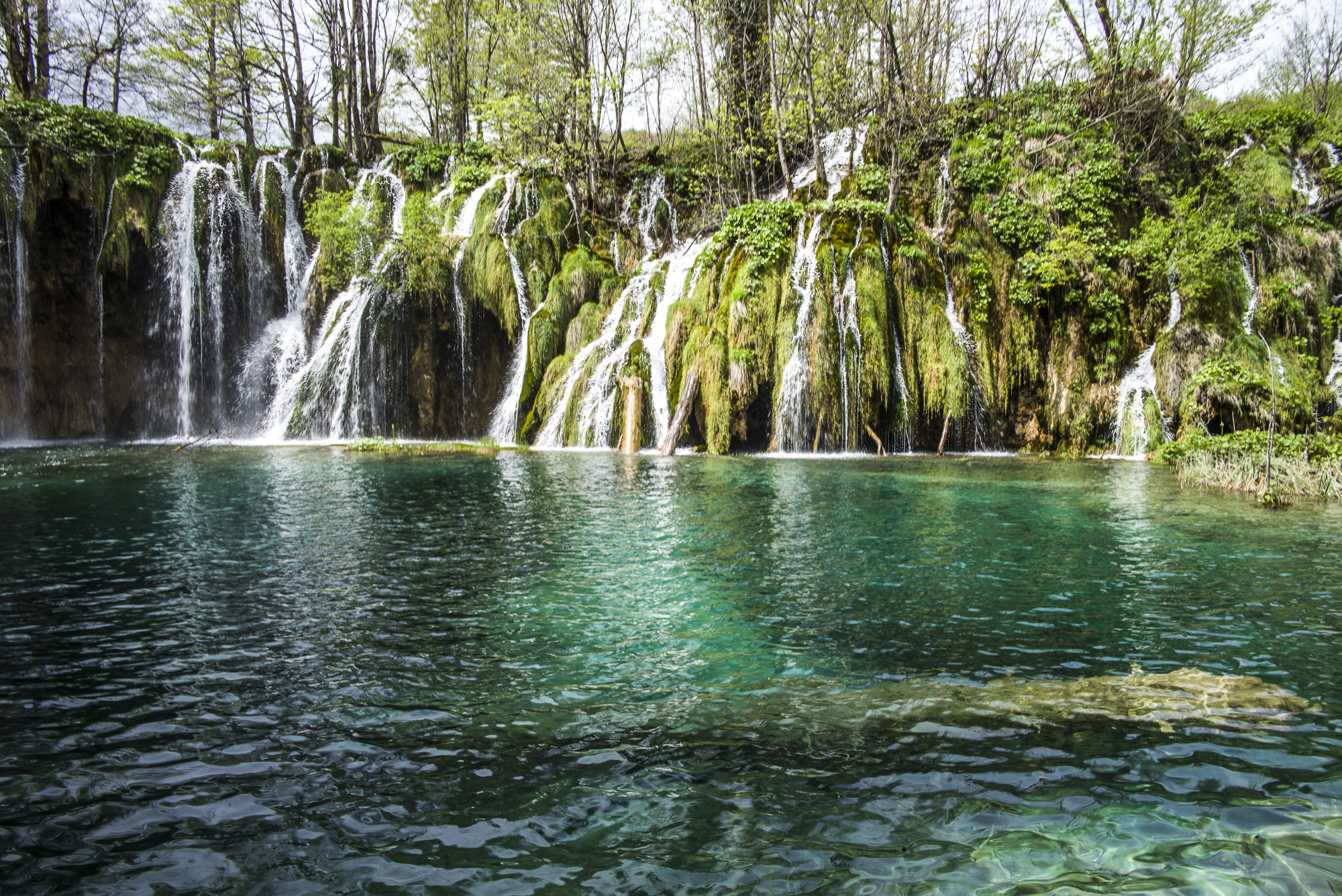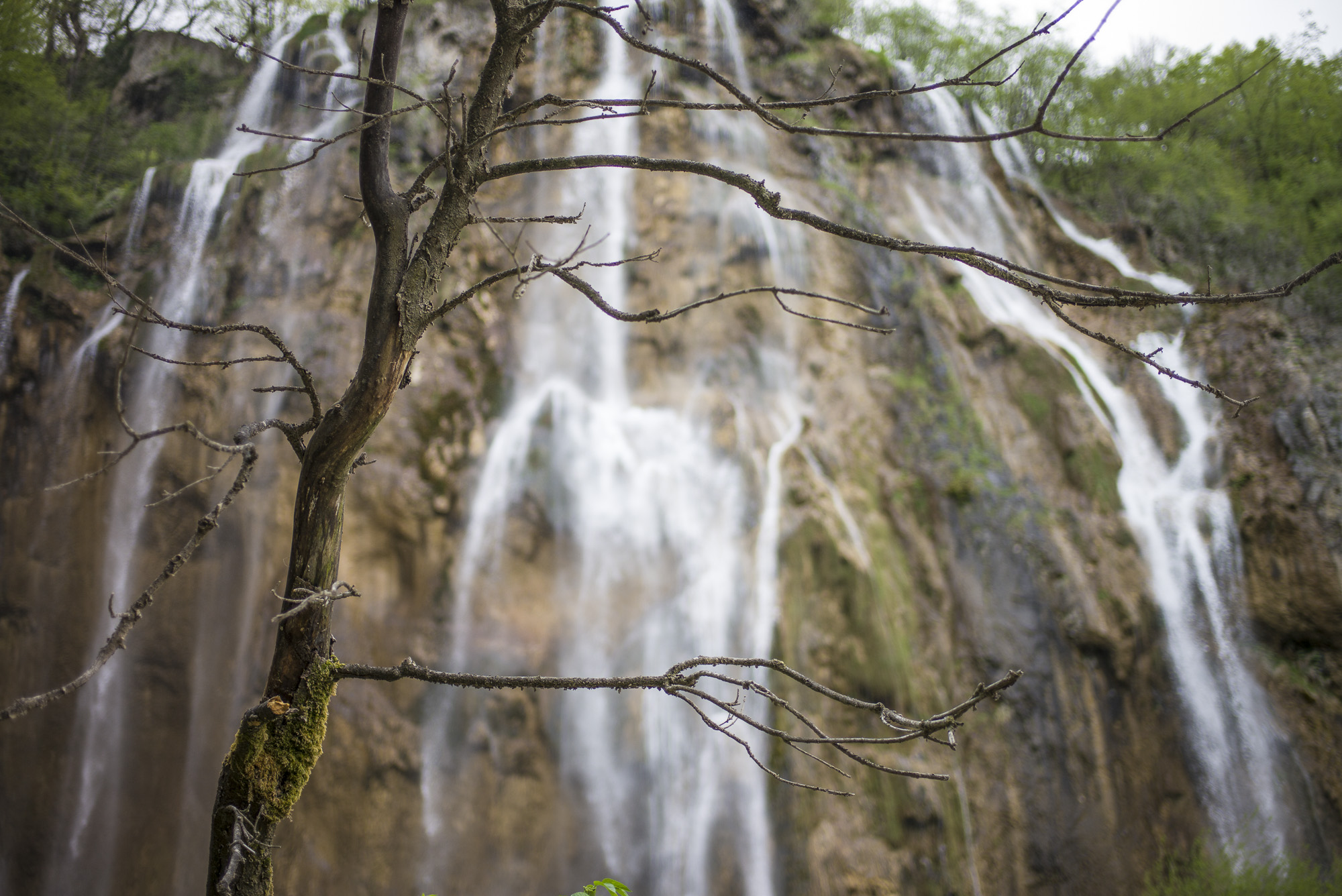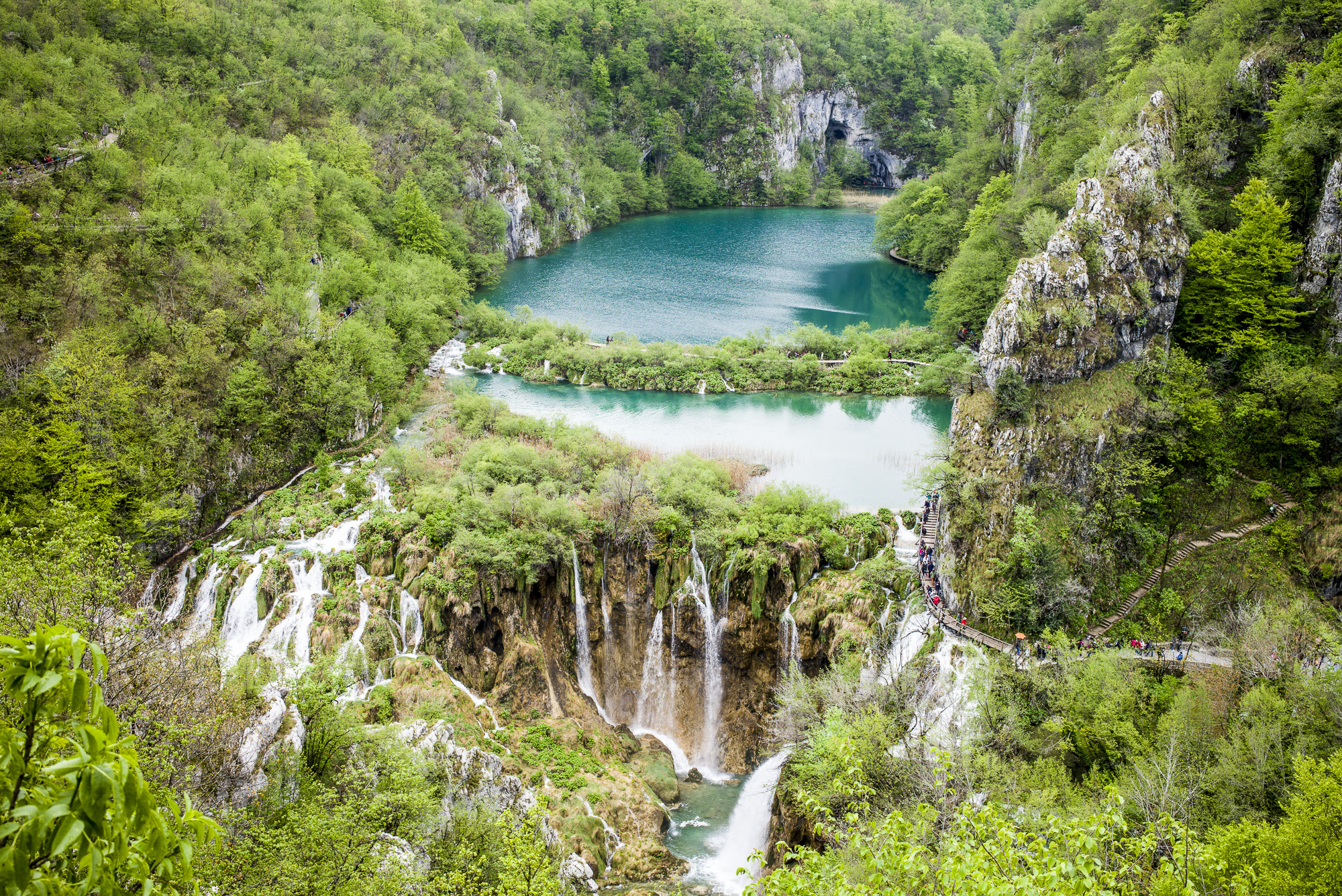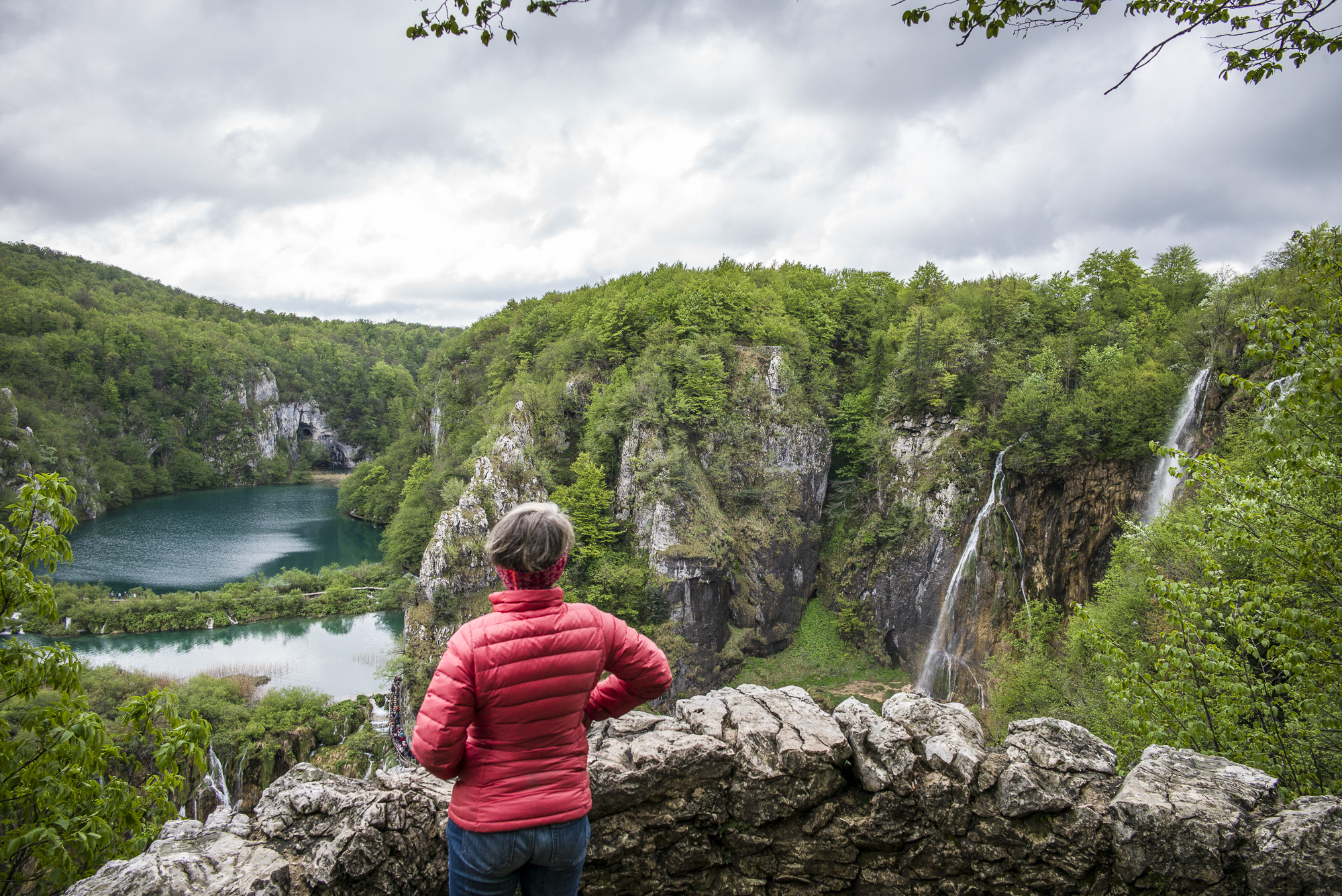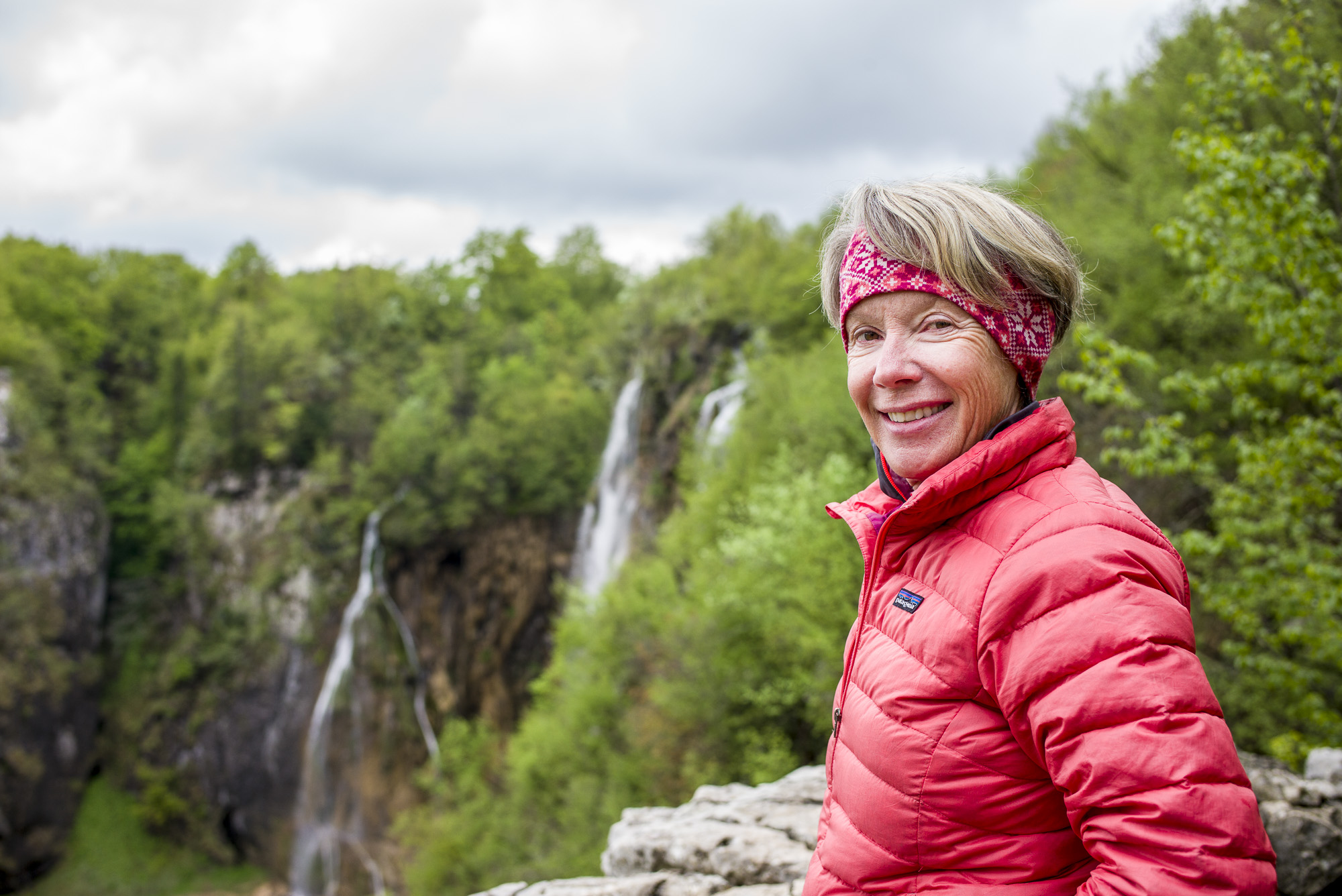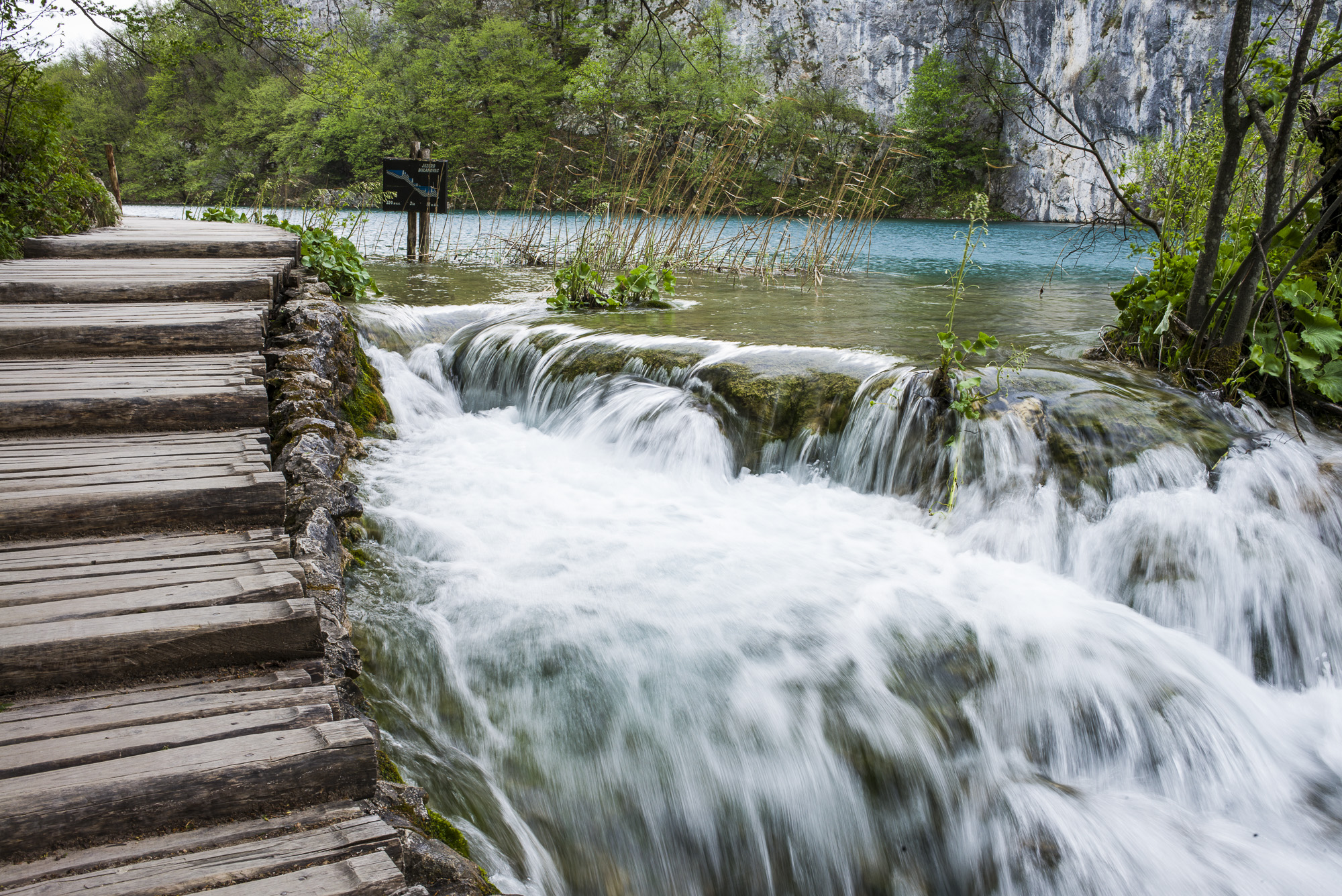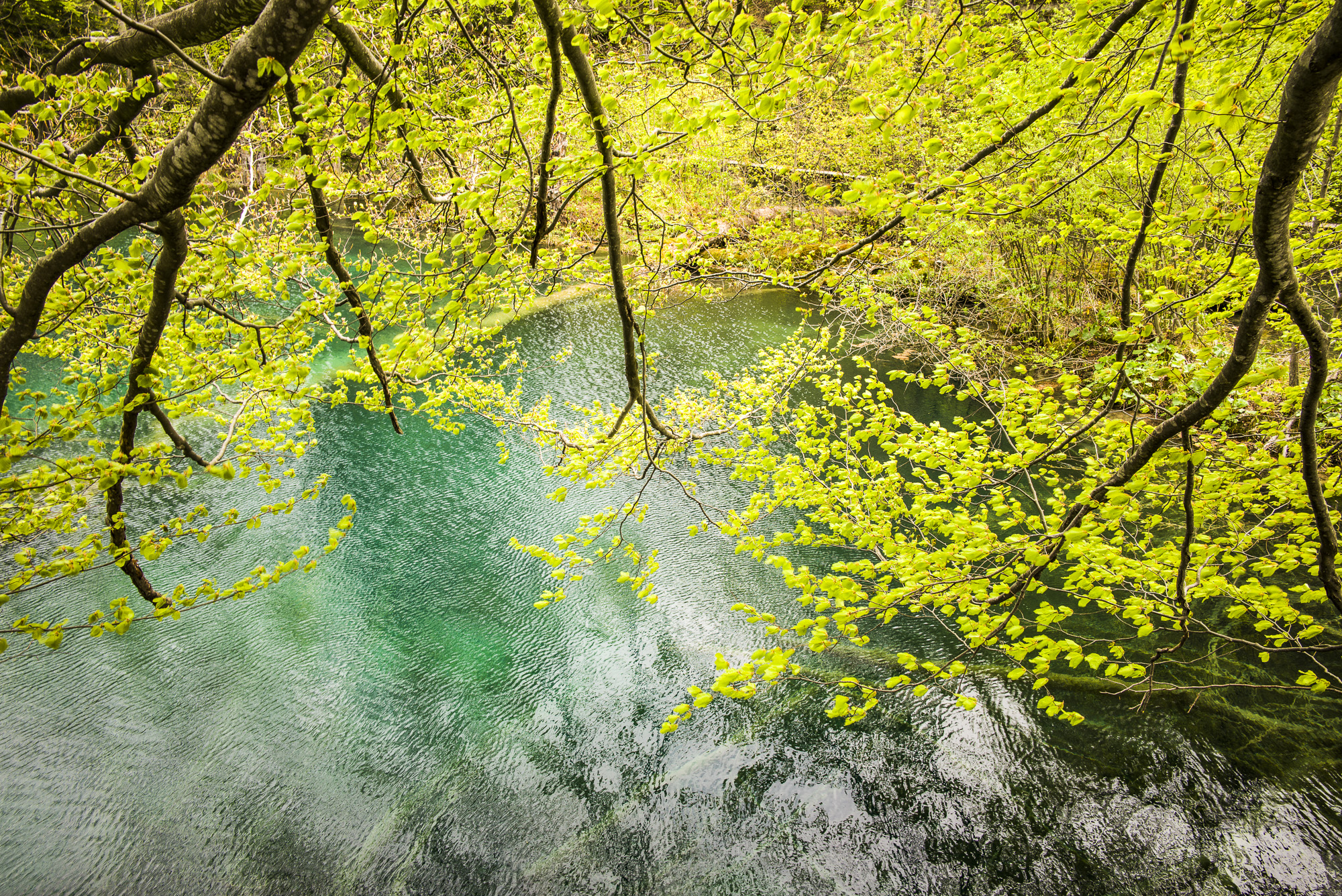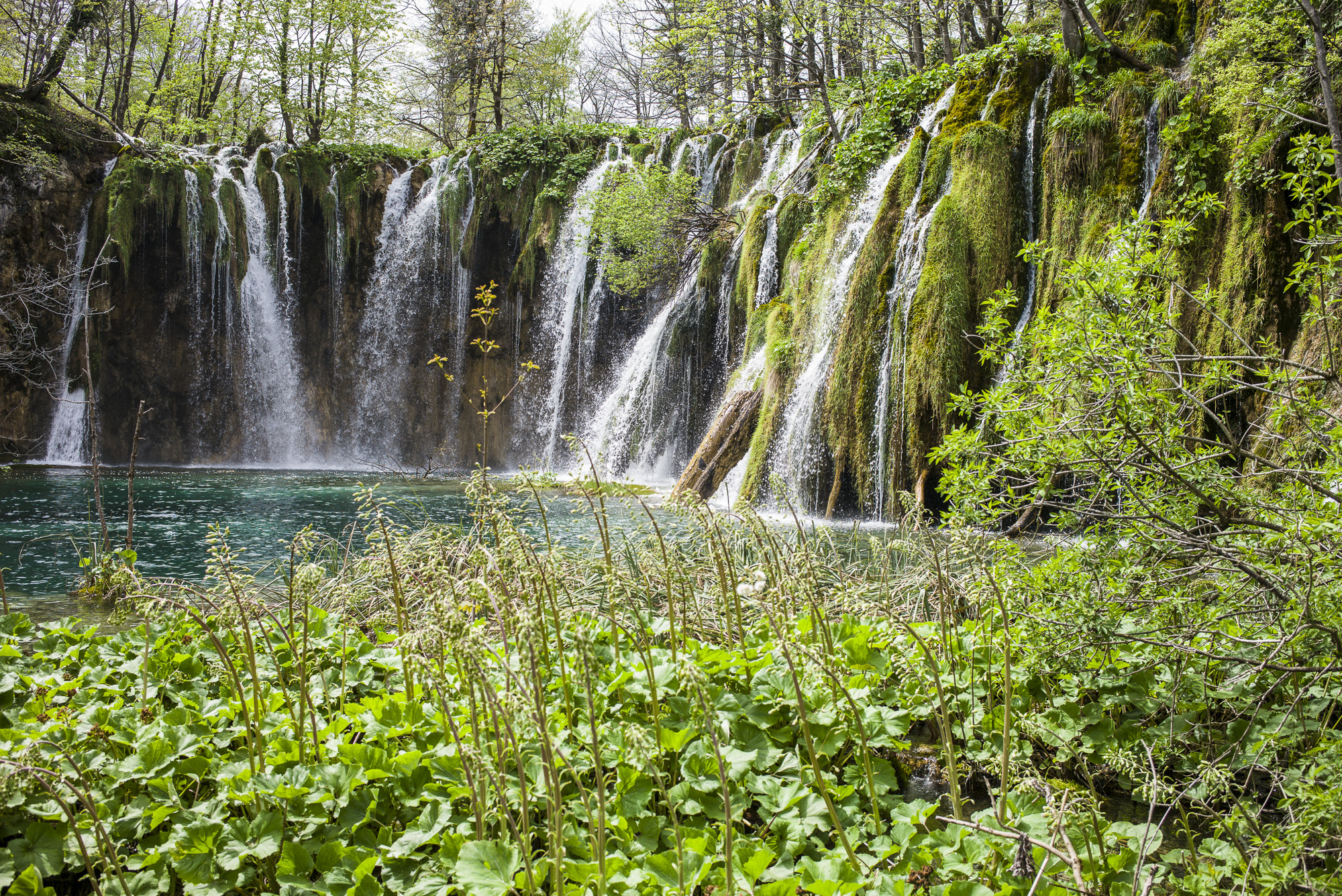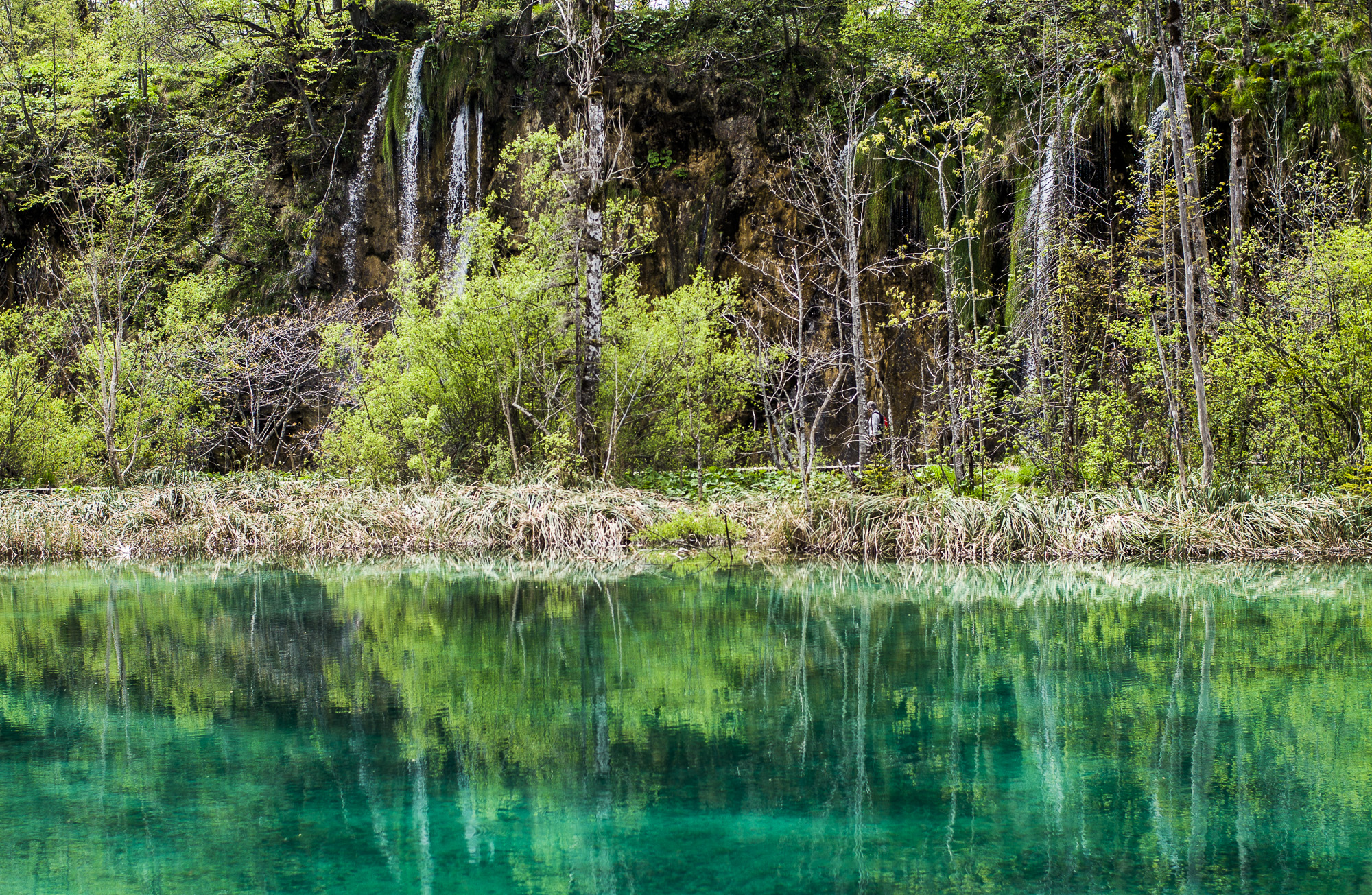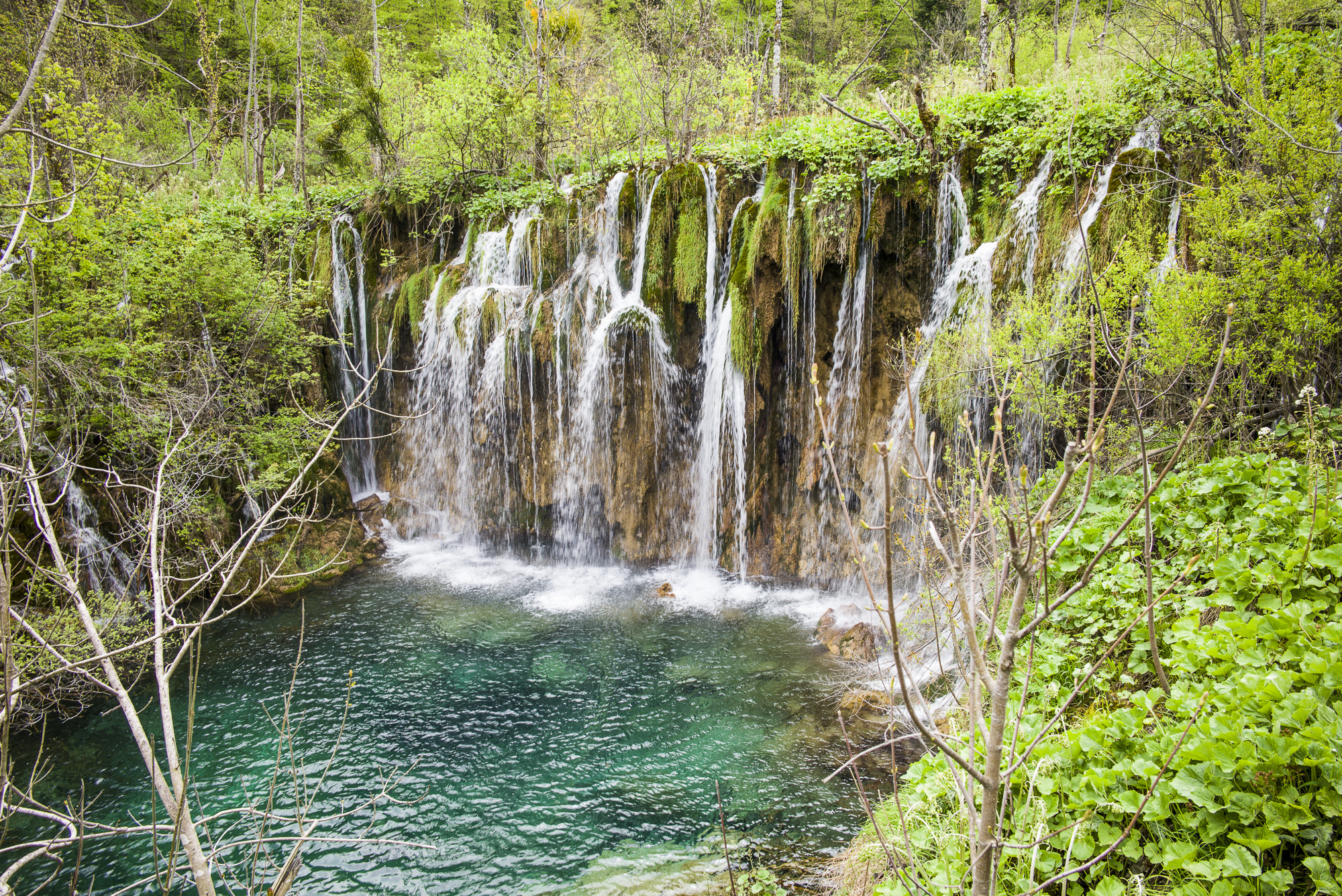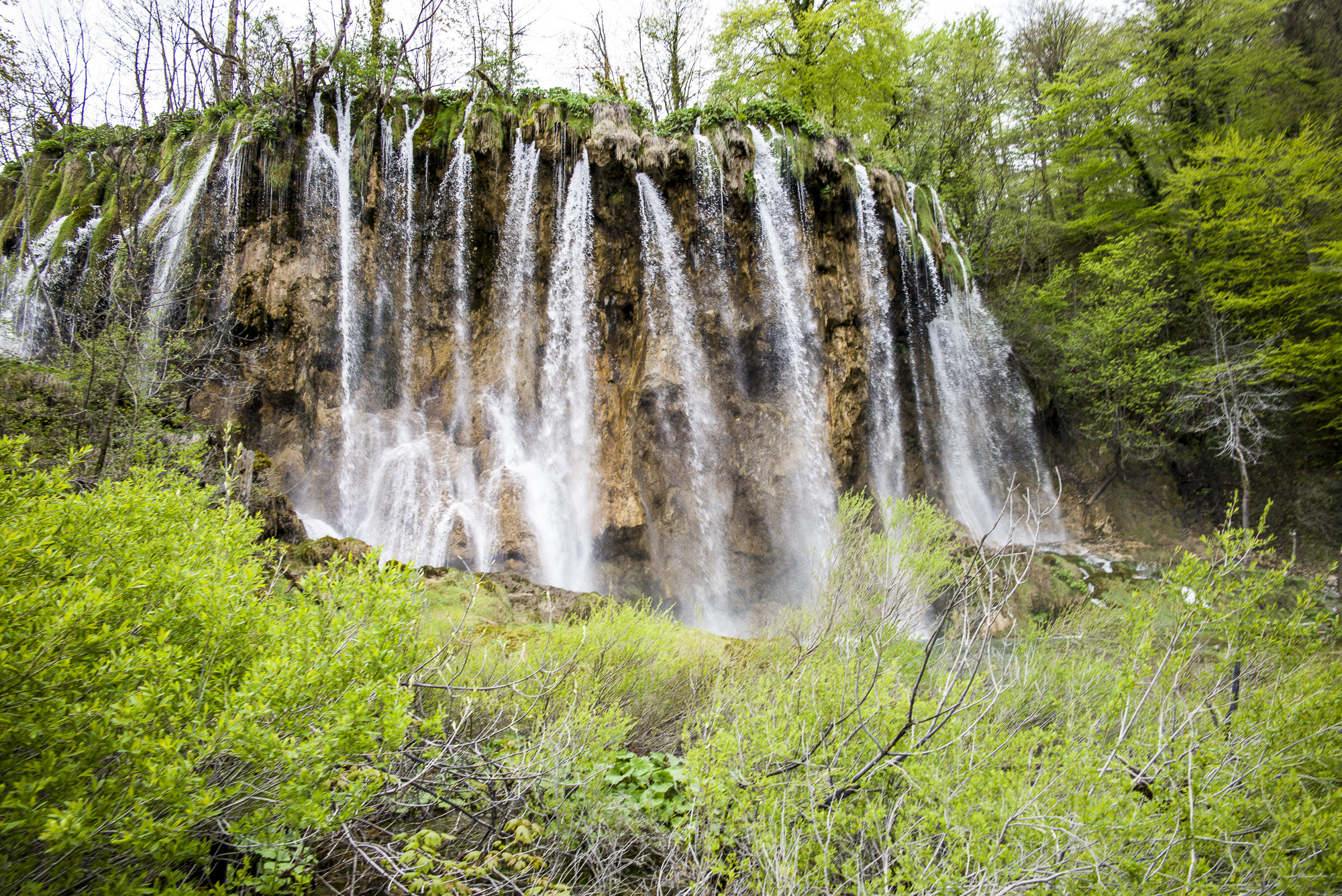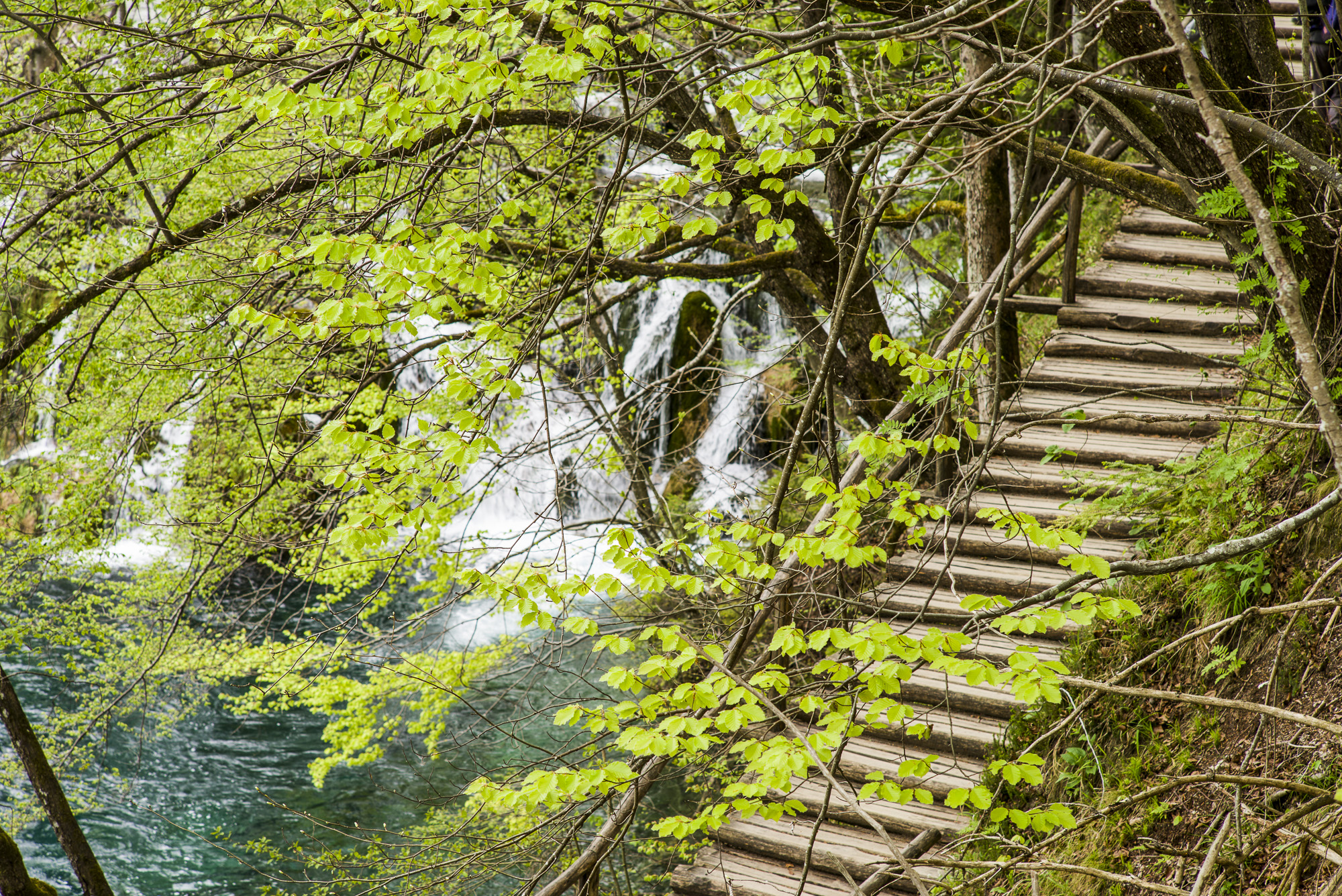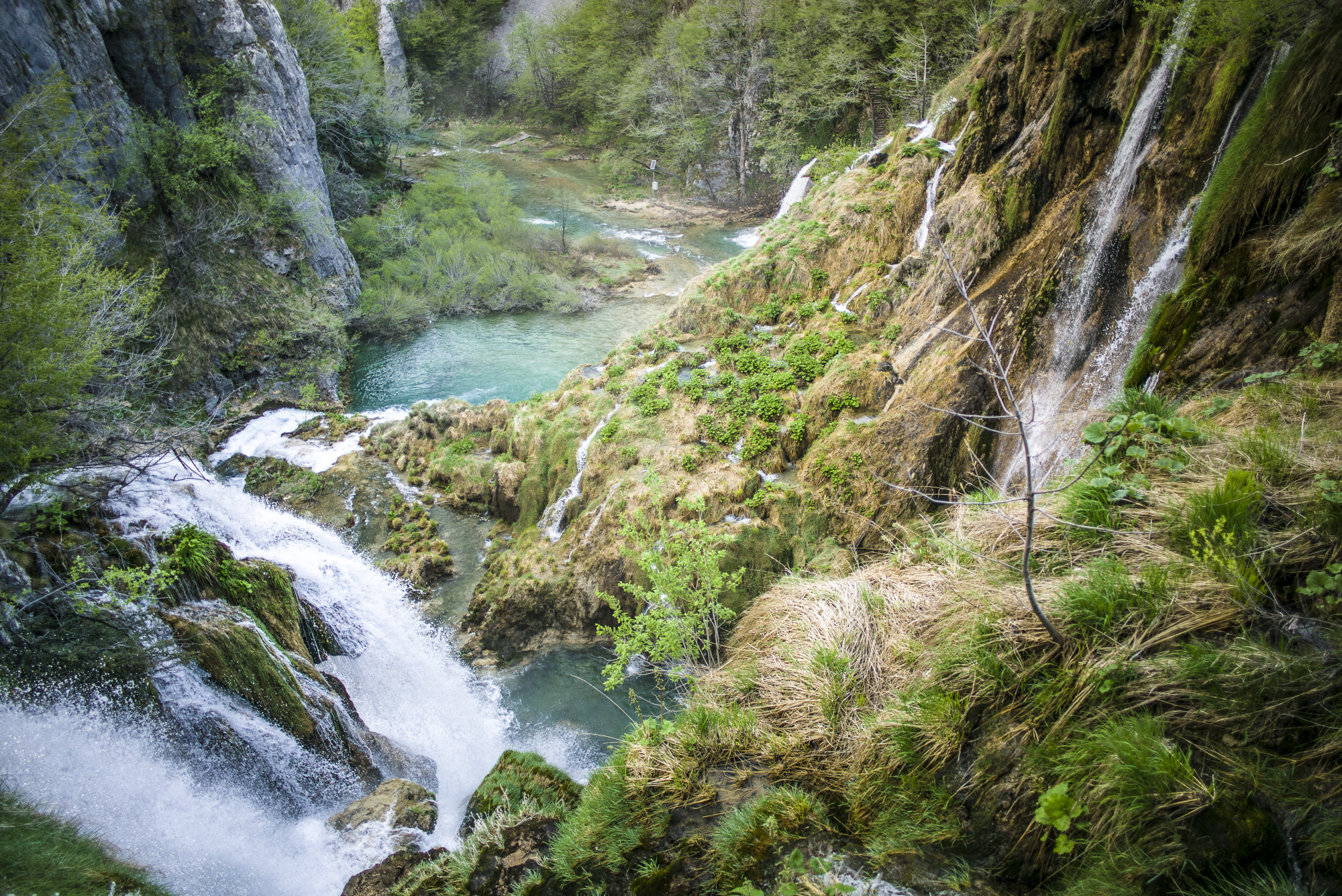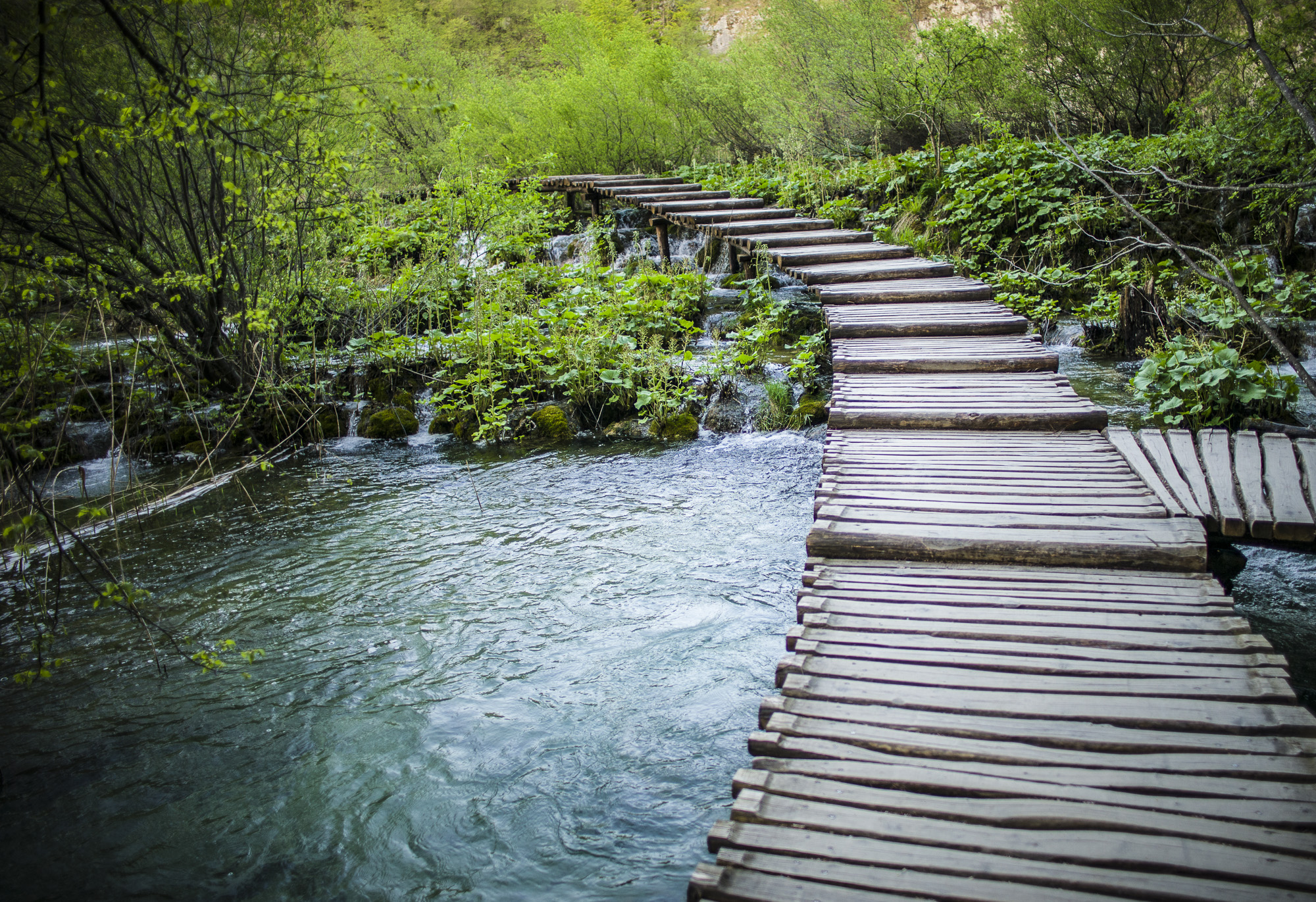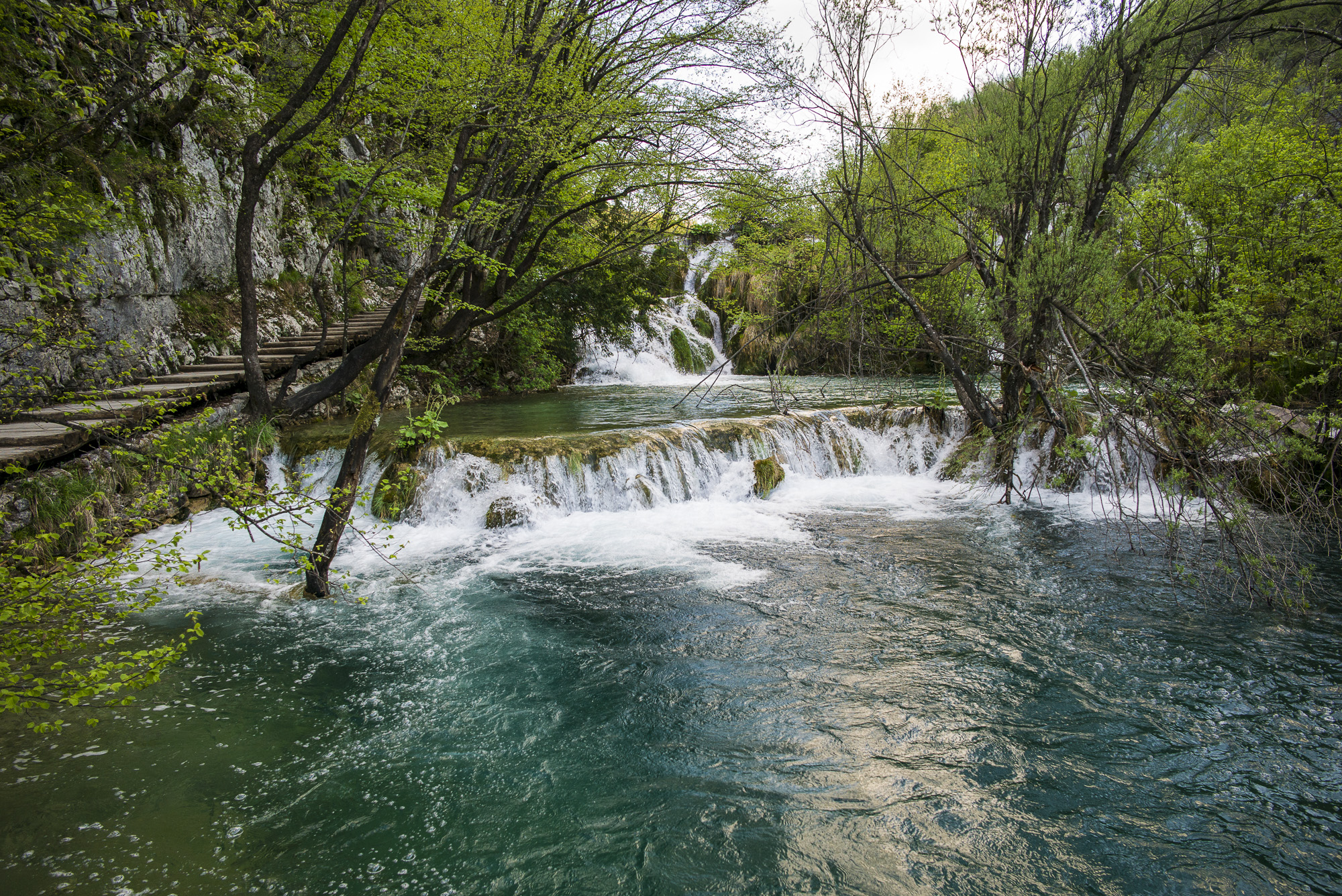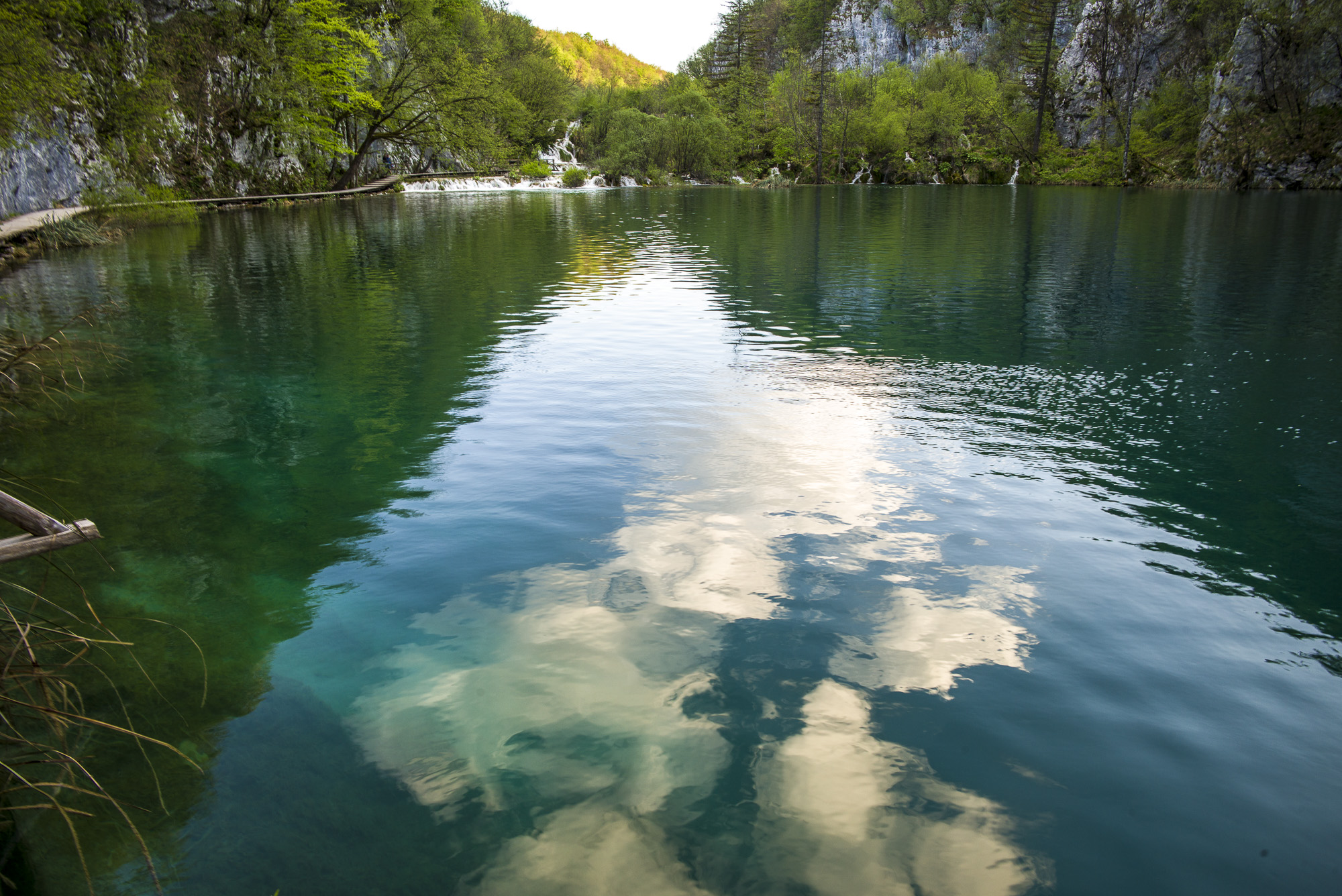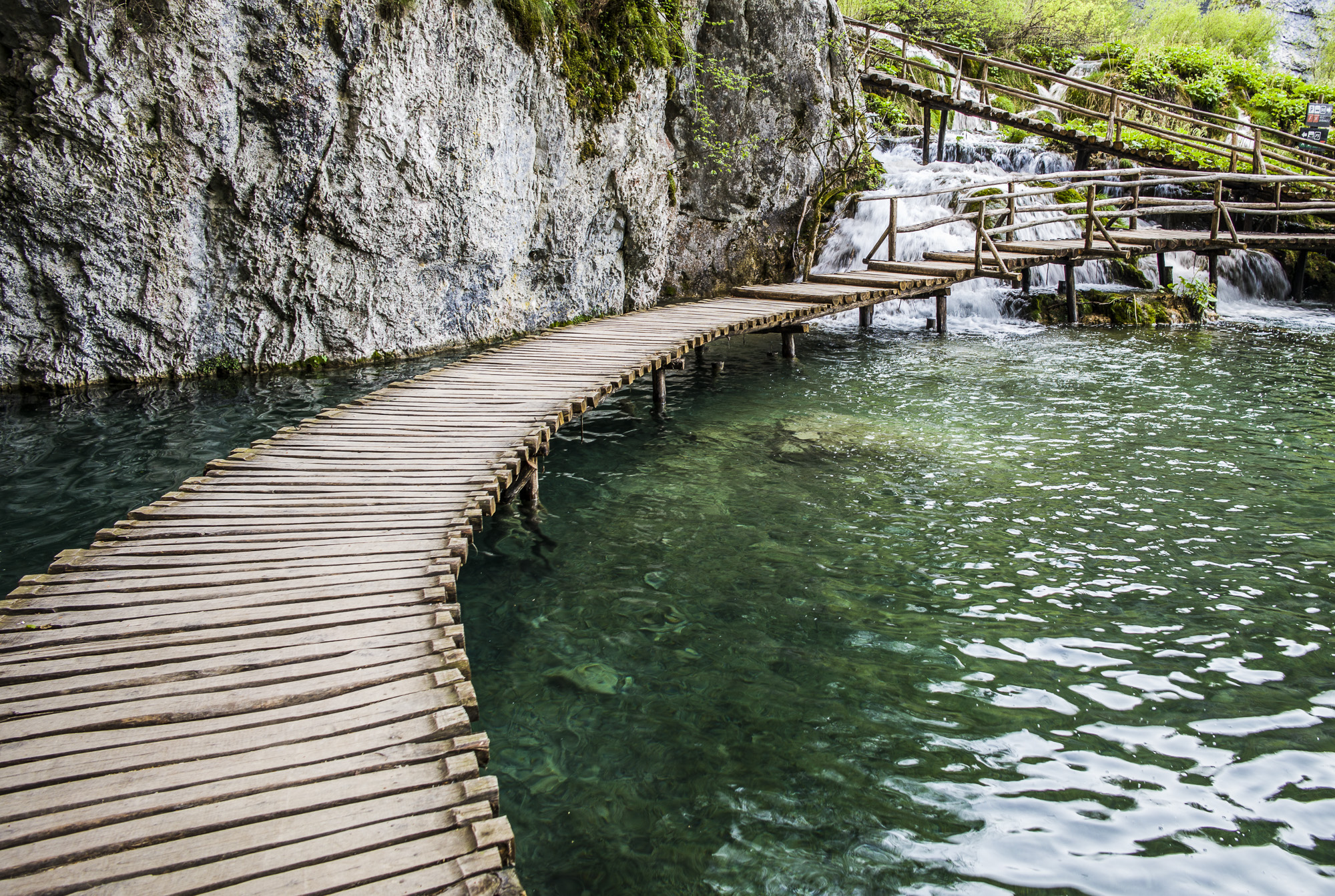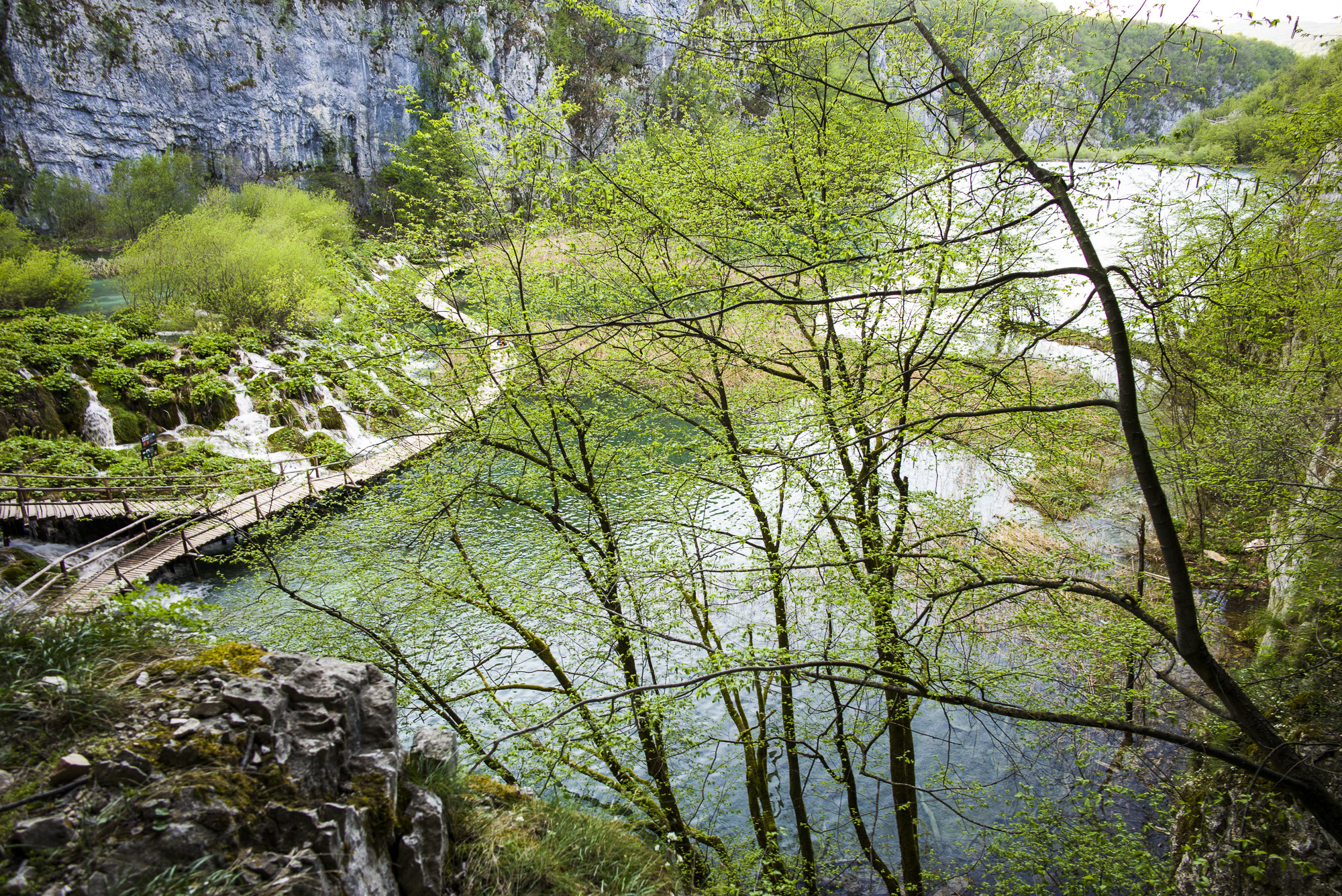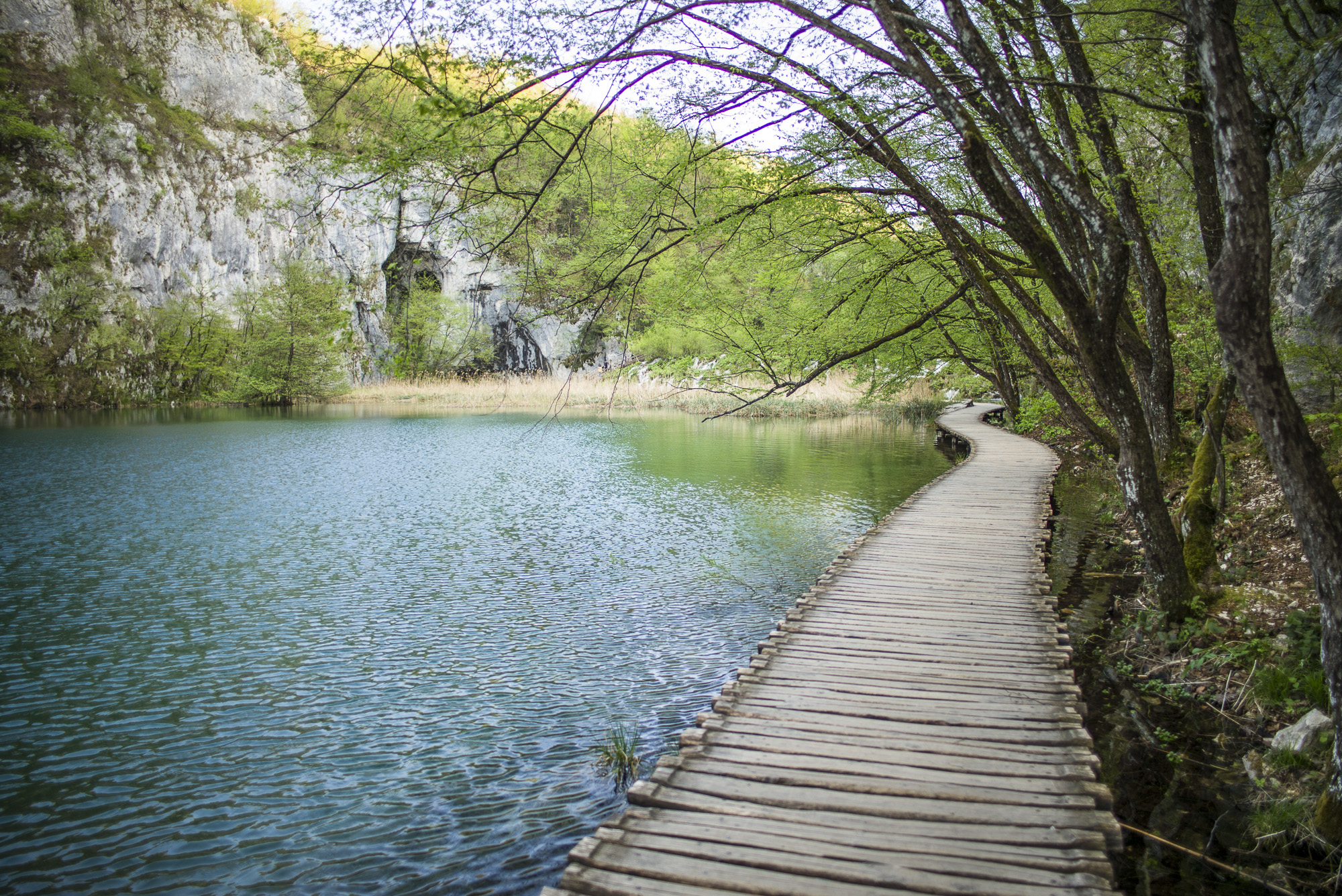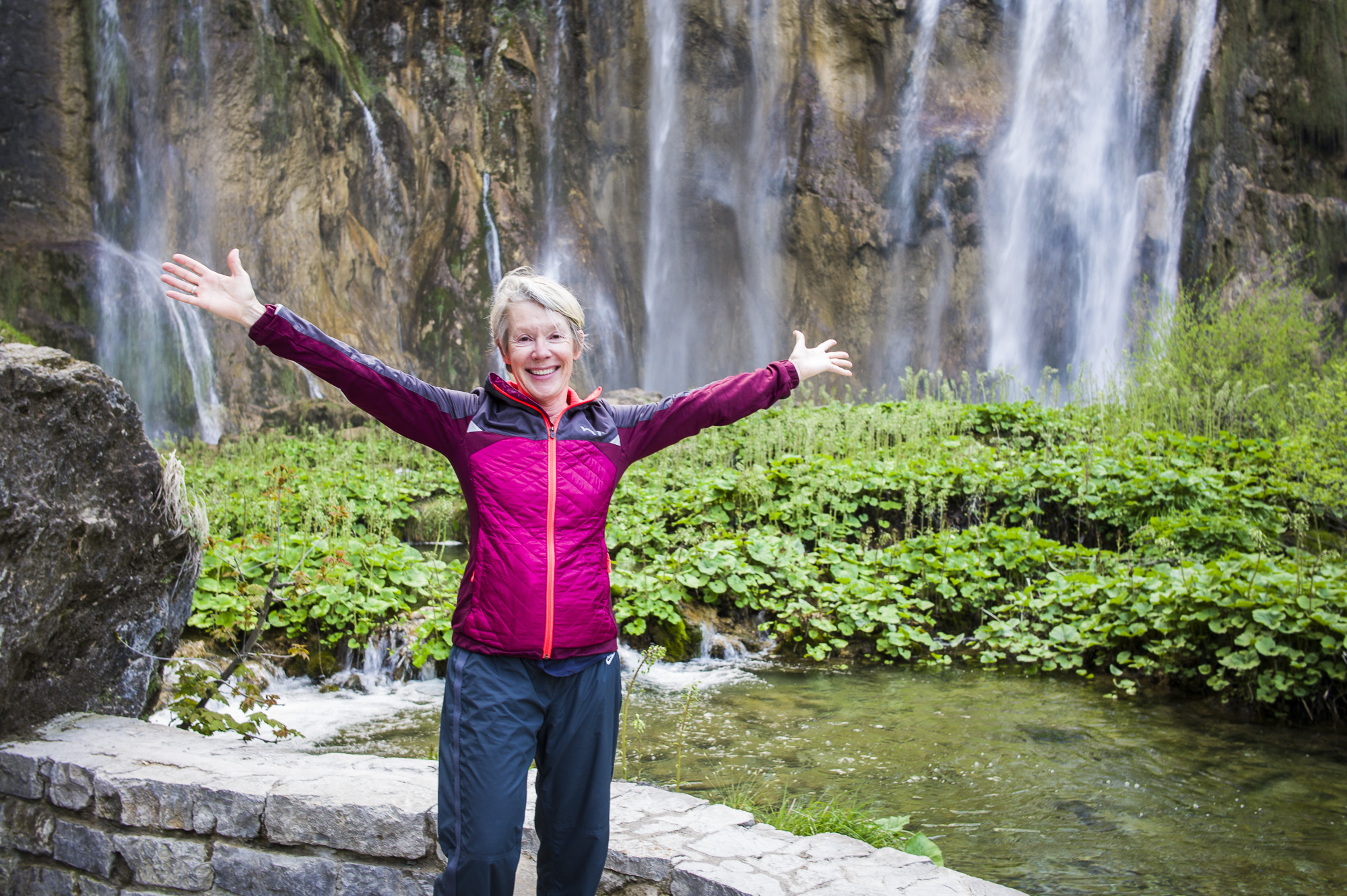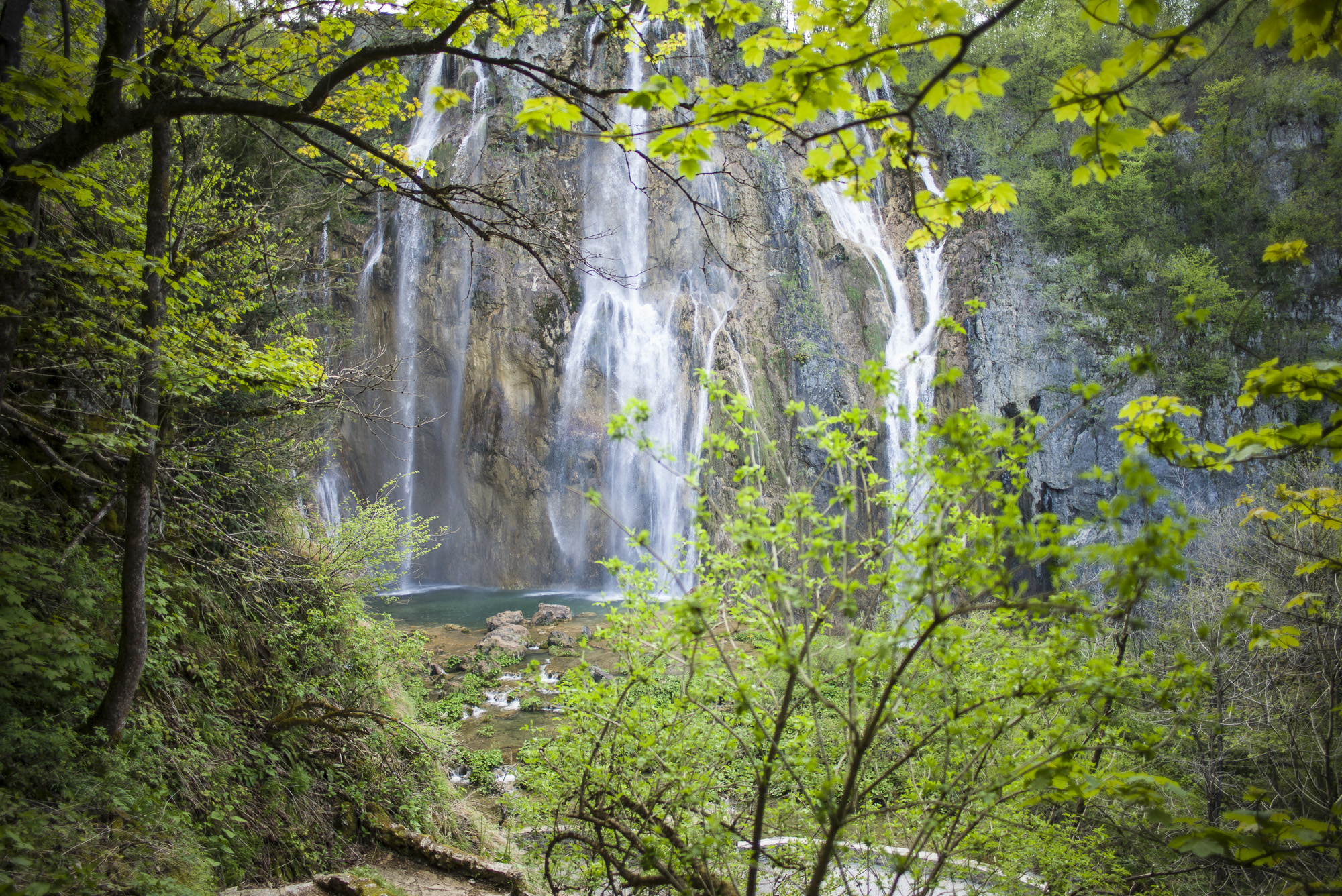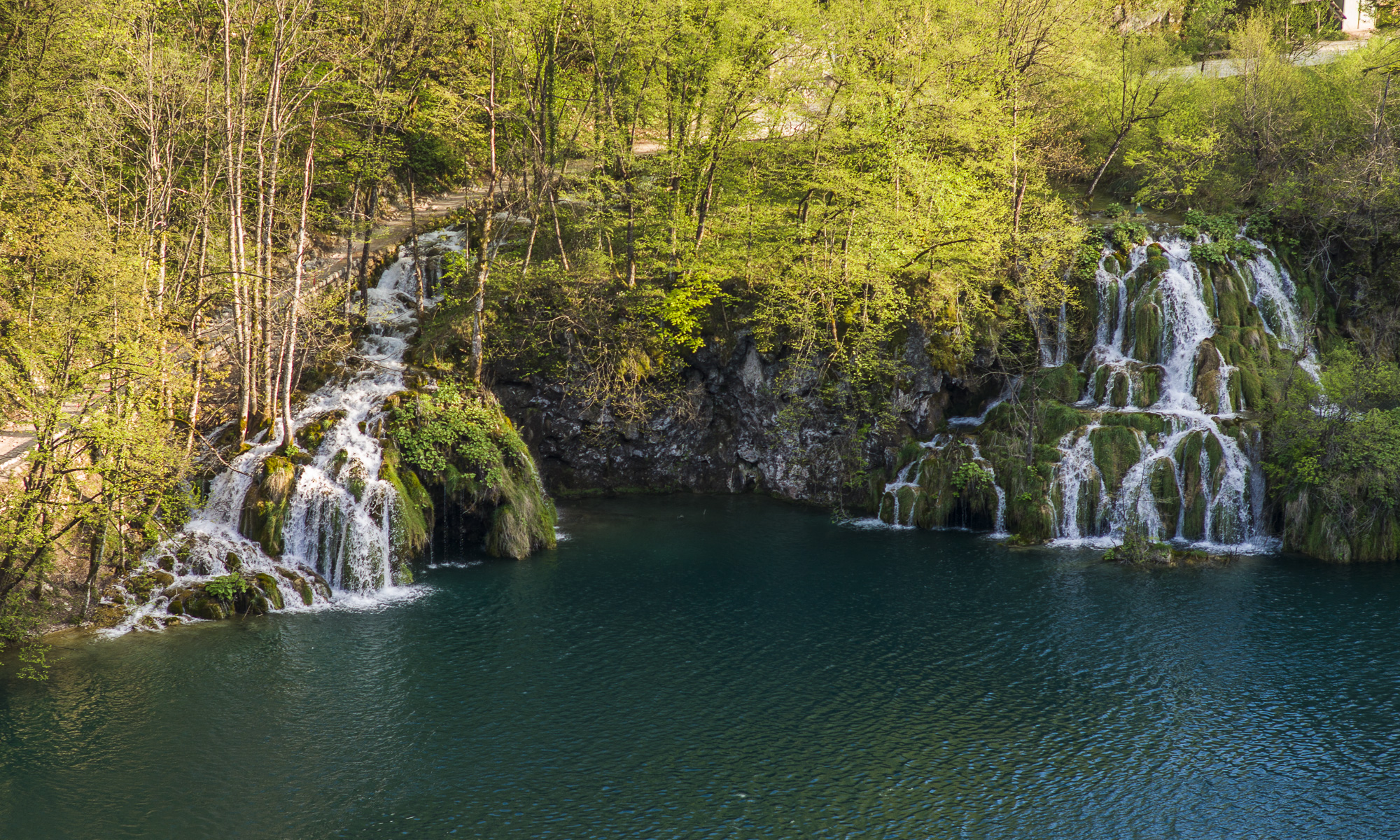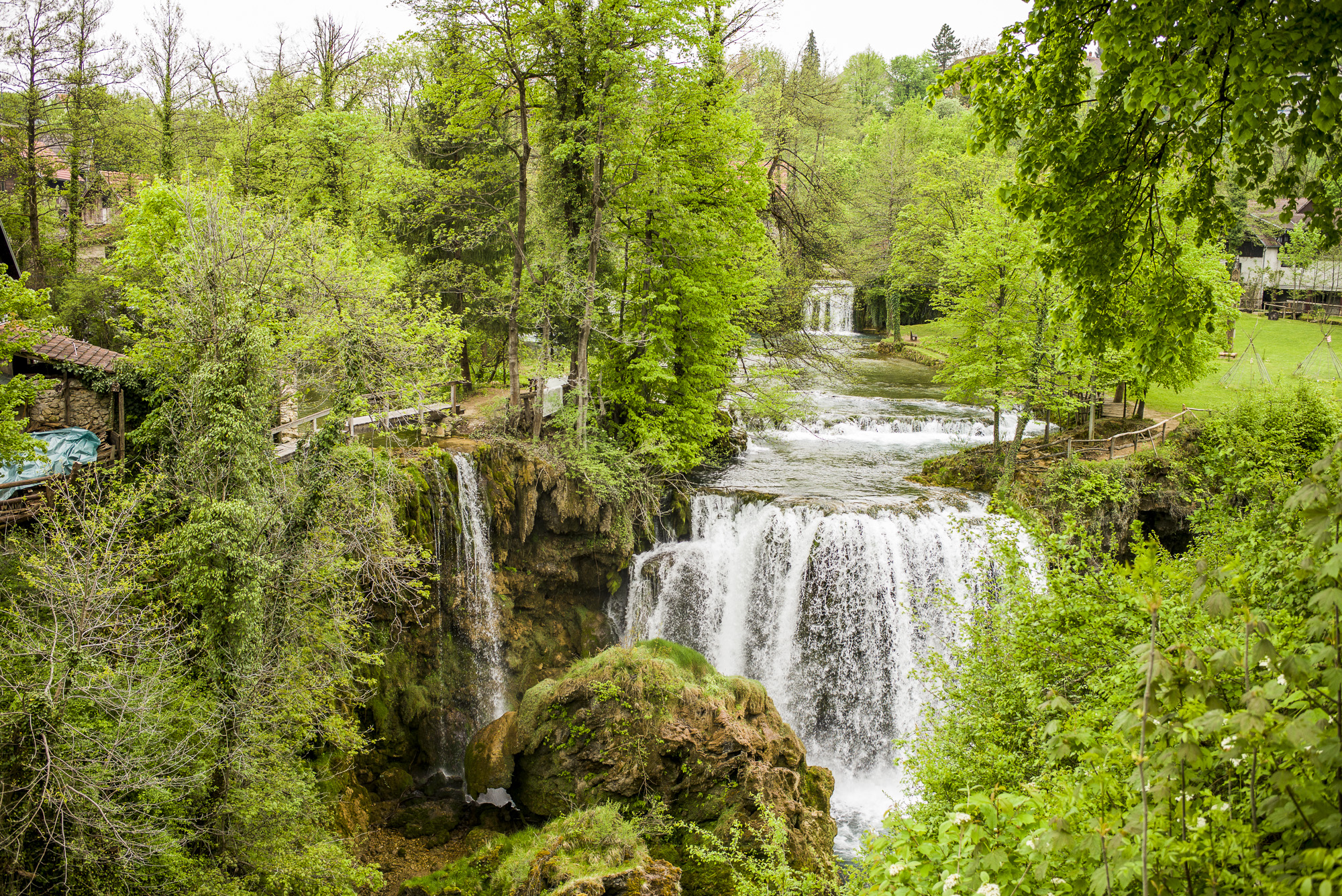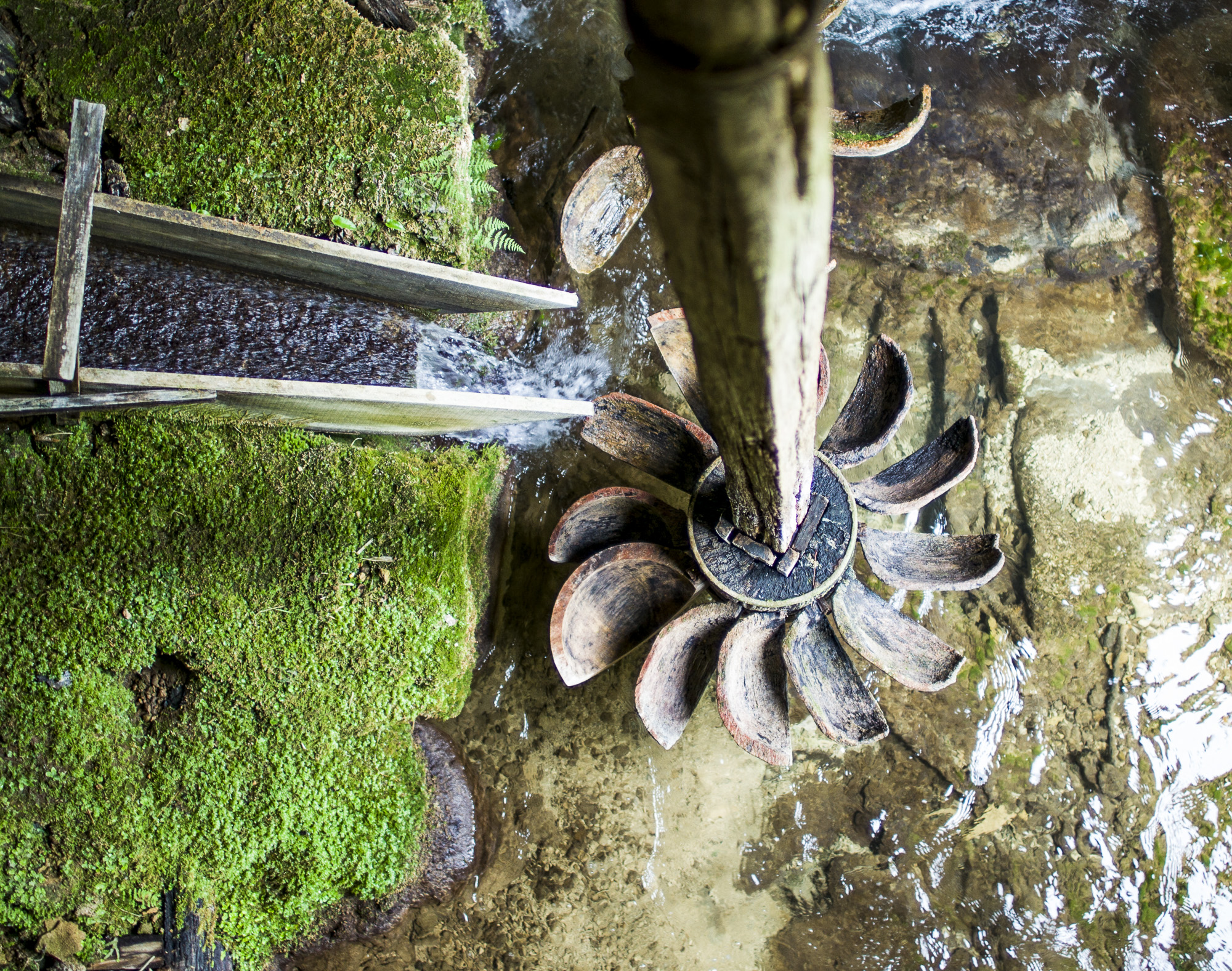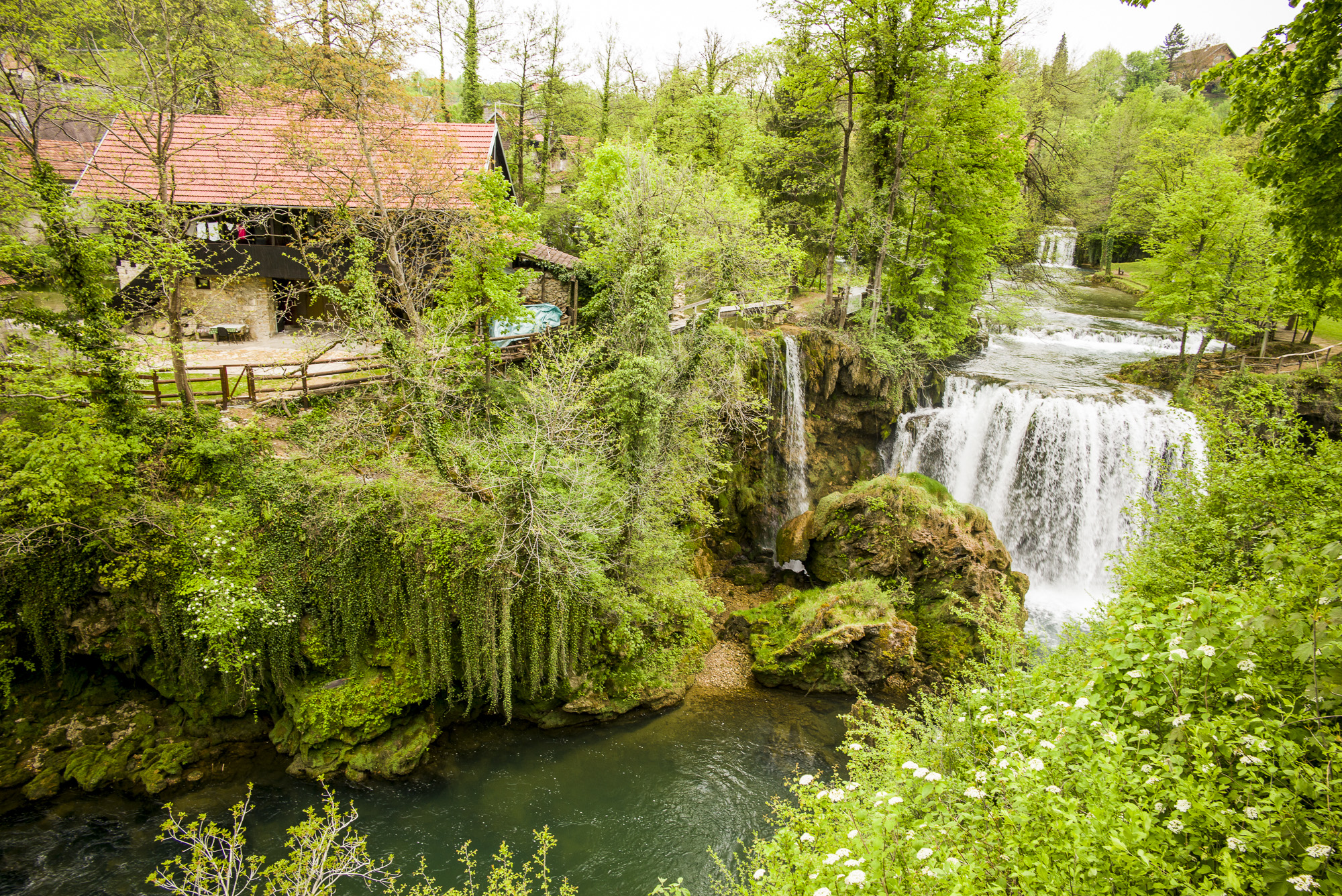Plitvička Jezera, Croatia
“She dares me to pour myself out like a living waterfall. She dares me to enter the soul that is more than my own; she extinguishes fear in mere seconds. She lets light come through.”
One of the many beautiful lakes and falls of Plitvicka
Walking on Water
Using words to describe Plitvička Jezera or Plitvice National Park is absurd. Even photos cannot capture the experience. The crystal clear water ebbs, flows, slides, slithers, crashes and falls as you wander mesmerized by the natural beauty of this tranquil place. You can walk approximately 7.5 miles around the 16 lakes or you can hop a bus or ride on a quiet, slow boat from one side of the larger lakes to the other side. Best to combine all 3 modes of transportation as you can easily spend several hours at the park!
Merriam-Webster's definition of waterfall is "a perpendicular or very steep descent of the water of a stream." You will spend the better part of a day experiencing the prepositions of movement (across, towards, away, from, along, under, over, around, in between and back) in relation to the 16 lakes. Contemplating the meaning of "waterfall" as you wander around the lakes transforms your visit into a walking meditation. The lakes are arranged in cascades and the park is not only a UNESCO World Heritage site; it is also the largest and oldest National Park in Croatia. The lakes are renowned for their stunning colors, ranging from azure to green and blue. Surrounding the lakes are meandering walkways comprised of distinctive, sturdy, wood planks. Even though the park hosts over 1 million guests each year, it is noticeably clean and the water is pristine.
After a couple hours of walking, we grabbed a sandwich at the "Communist chic" Jezera Hotel which opened in 1970 and was remodeled in 1999. Entering the hotel is like stepping into a time machine. A jarring 4 story grey cement block tower (with no obvious purpose) hovers above the entrance and serves as an indication of the interior. Stepping into the lobby, you begin to get the feeling that Communist interior decorating is not about creating a warm, cozy space. Such a stark contrast to the incredible beauty outside! This is the nicest (3 star) hotel in the park and appears to be at capacity even during the off season serving German pensioners and Asian bus tours. The Jezera Hotel is worth a visit as it serves as a reminder that Croatia has a rich history.
Be sure to wear appropriate footwear, bring a backpack with water and snacks and an extra layer. Small children will need to be carried much of the way. Since our visit was in early May, there were other visitors but it was manageable. The Summer season is likely full of tourists.
Lodging
Ethno Village at Plitvicka Selo
If you are looking for a new experience, consider staying at unique Croatian lodging that has "ethno" or "agri" in the name. Ethno or Agri places vary widely and just like the star system of hotel ratings don't appear to have uniform meanings and standards. Best to think of these as guides and read reviews from recent guests in order to get a feel for the place you have in mind.
We enjoyed staying at Plitvica Selo which is an "ethno", "agri", 4 star Sobe (Croatian lodging rating system) and hotel combo. It is a short walk to the Big Waterfall, Entrance III to the Park and the boat dock on the Lake Kozjak. The staff is wonderful and there is a restaurant, wellness center, swimming pool, ponies, Japanese pig and a huge Bernese named Zeus. It is a family run resort and the rooms are quaint, comfortable and clean. While the restaurant accepts credit cards the hotel does not.
We recommend the onsite restaurant at Plitviča Selo. It is worth a visit even if you don't stay at the hotel. The potatoes and lamb hot pot is delicious. They also have many vegetarian offerings.
If a hotel is more your style, check out the National Park Plitvička site. Camping is also an option for this area.
Natural Dams of Plitviča
The natural dams are created with a unique recipe of chemistry and biology. The rocks are limestone which has the chemical composition of Calcium Carbonate CaCO3. As water comes over the limestone the calcium carbonate dissolves into the water. This creates a relatively high concentrations of Carbon dioxide CO2 and Calcium Bicarbonate Ca(HCO3)2 in the water. When the water flows quickly like in a waterfall the oxygen in the air changes the chemistry. This change in the chemistry makes the location of the fast flowing water a place for the dissolved limestone to come out of the water and deposit itself on the rock surface where the water is flowing fast. This change in chemistry also makes this location a good place for biological processes to occur like the growing of bacteria, diatoms and mosses. So where the water is flowing quickly, a dam is formed. Over time the dam prevents the water from flowing at this location, so the water flows somewhere else. This continuous process builds up a natural dam evenly all around the lake and creates this wonderful set of cascades and falls that is Plitviča. Here is a link to a scientific paper describing the process. Wikipedia has nice layman explanation for the process as well.
Caves of Barac
This process of dissolving the rocks also creates many caves and caverns in the area surrounding Plitviča. There is an interesting cave that is open to the public about 12 km away called the Caves of Barac. The walking guided tour is about an hour or so. There is a nice hike up through the forest and to the caves. Our guide was knowledgable about caving and loved to share his knowledge with the people visiting his cave. Interesting experience and something to put on your list.
Slunj and Rastoke
A little waterfall at Rastoke
The village of Slunj is about 20 km north of Plitvička Jazera. On the north side of Slunj is a quaint area called Rastoke which has some of the same types of falls as Plitvicka, but these streams and falls go through the village. There is a family run museum in Rastoke which shows how the old mills worked that were powered by these streams. The museum also has a collection of authentic items that were used by the people of Rastoke when the village was first settled 300 years ago. This is a charming village and worth the visit if you have some extra time. We combined a visit to both Rastoke and the Barac Cave in one day.





